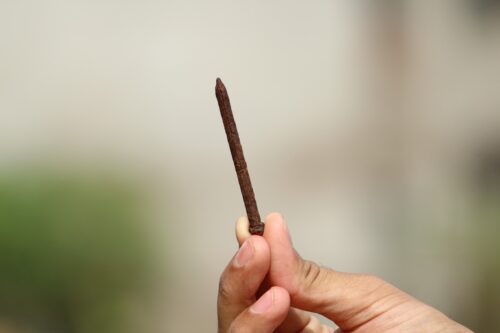Learn Using Rusty Nails for Plants and cure their iron deficiency with this easy, cost-effective trick for healthy plants.
Just like the human body, plants also need iron for good health, but have you heard that rusty nails can save your dying plants? In this post, you can learn about using rusty nails for plants and make them healthy effortlessly.
Is a Rusty Nail Good for Plant?

Rusty old metal nails are a good source of iron; you can use them to save your dying plants. Rust is iron oxide, which can benefit your plants in moderate amounts, as rusty nails are not water-soluble except when the soil pH is very low. Just put a few rusty metal nails into a bottle filled with water until it turns brown in color. Use this water on your wilting plants and see the leaves will revive again.
The rust emits iron in the water, which plays a vital role in nourishing dying plants.
Role of Iron in Plants
Iron plays a vital role in plant health; ferric oxide is a chemical that exists in the soil and gives it a distinct red color; the plant can absorb iron from this chemical.
Why do Plants Require Iron?
Plants require a small amount of iron to stay healthy, but only a small amount is essential. Iron is included in the process when plants produce chlorophyll, which delivers oxygen and a green hue to plants. The iron deficiency in plants can cause pale yellow weak leaves. Iron is also essential for a few enzyme functions in several plants.
If the soil has too much lime, then it can cause an iron deficiency in the plants. You can rectify it by adding an iron fertilizer or using rusty nail water in that area.
Rusty Nails for Plants
The pH is important in the coloration of flowers, e.g., red or pink hydrangea blooms are produced if the soil is alkaline or neutral. Blue flowers grow from acidic soil that enables for greater absorption of natural aluminum in the dirt. You can raise soil acidity and boost the plant’s aluminum intake by burying 2-3 rusty nails in the soil near the hydrangea.



